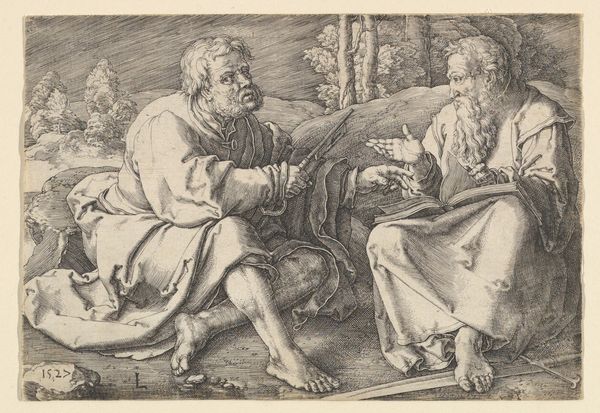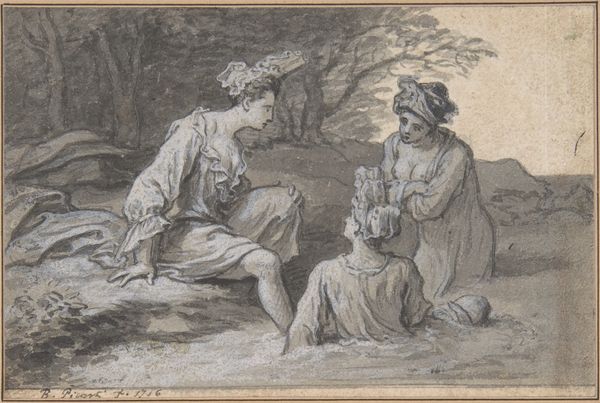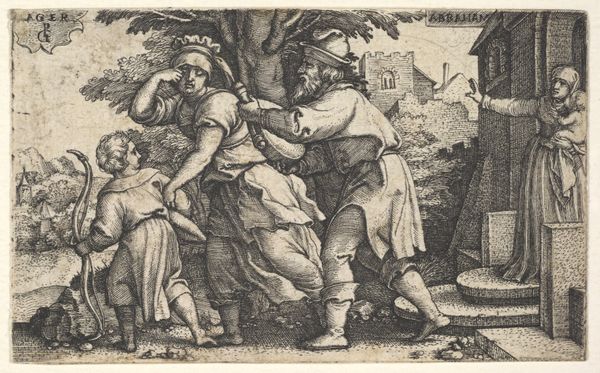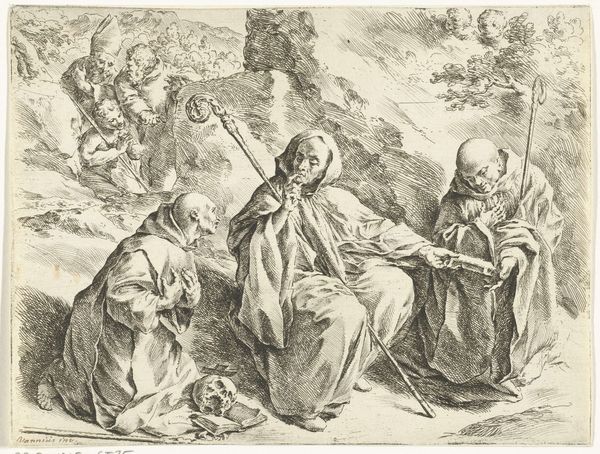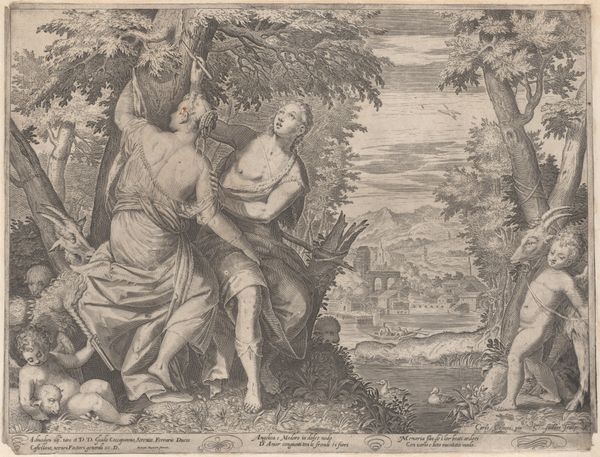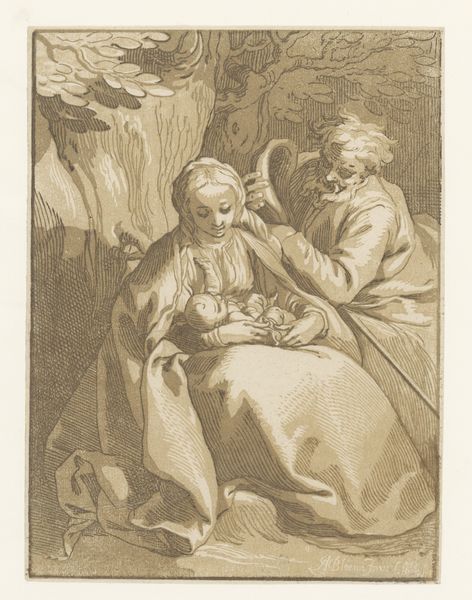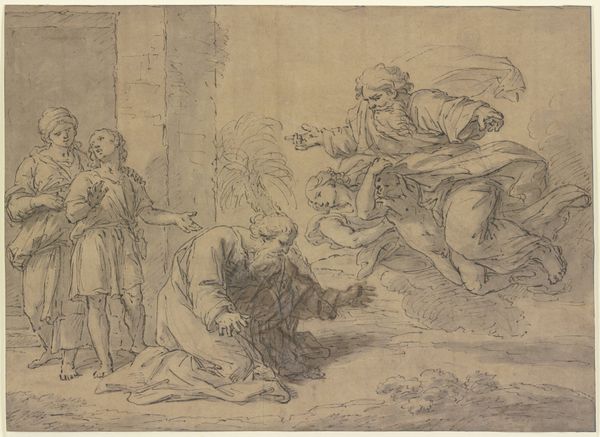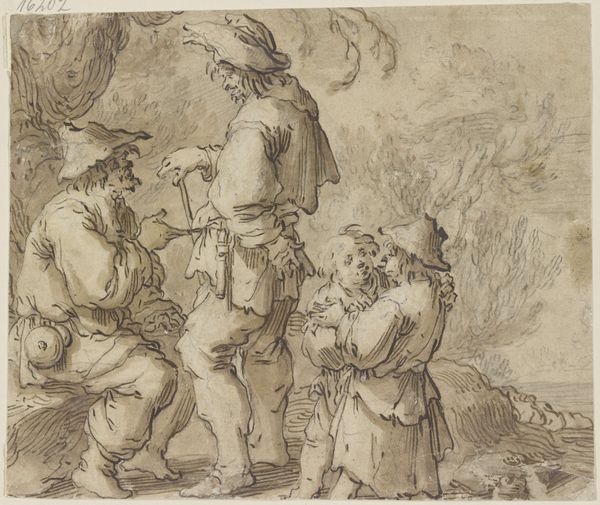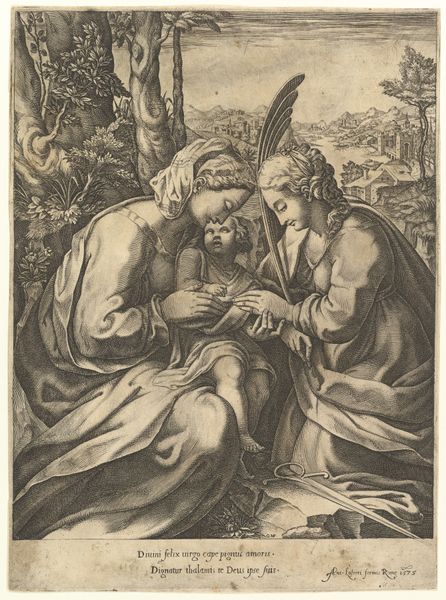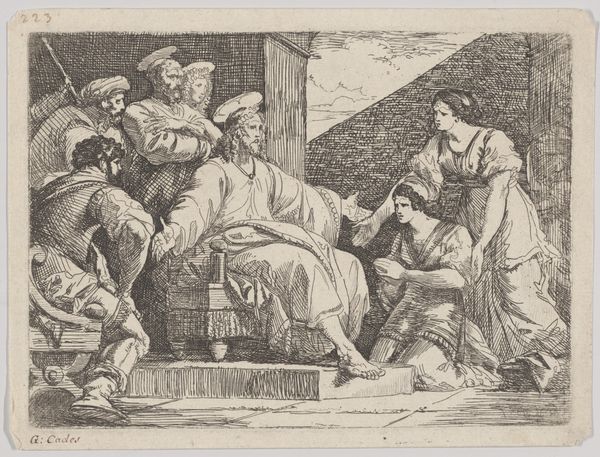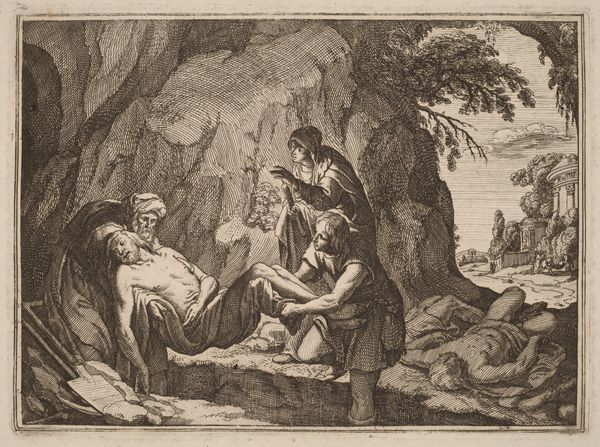
drawing, print, paper, chalk, charcoal
drawing
charcoal drawing
figuration
paper
11_renaissance
charcoal art
oil painting
chalk
charcoal
history-painting
Dimensions: 280 × 373 mm
Copyright: Public Domain
Curator: Looking at this print of "Tobias and the Angel," what immediately strikes you? Editor: It's the composition that gets me. The somber charcoal shading contrasting with the reddish chalk figures evokes a sense of both mystery and tranquility, like a quiet scene unfolding from an ancient story. There's an ethereal quality to it, though it appears unfinished, quite intriguing! Curator: The artwork's origin can be attributed to the esteemed Matteo Rosselli, a prominent figure of the Renaissance. The narrative focuses on the Book of Tobit, showing Tobias accompanied by the archangel Raphael. Note the angel directing Tobias as he holds the significant fish, elements critical to his journey of healing and familial redemption. Editor: The societal implications of showing Tobias' obedience to the angel reflect the religious conventions during that period. Considering art patronage, this print possibly served a didactic function for religious teachings within a specific audience, reinforcing hierarchical power and divine intervention. What is particularly striking is the contrast between the strong outline of the two central figures and the rougher background sketch and the inclusion of a somewhat mundane animal. How do you read this stylistic choice? Curator: Methodologically, this contrast invites contemplation of completion and perfection versus potential or becoming. Rosselli uses mixed media—charcoal and chalk on paper—allowing differing levels of refinement. Perhaps that stylistic device leads the eye toward understanding relationships, both in line and meaning, found within incompleteness. The foreground is quite present as a finished drawing; its background exists solely as idea. Editor: That pushes us into wondering: For whom did Rosselli prepare it? Did it stay within the artist’s atelier or travel between studios and collections as examples of subject matter and a variety of drawing methods. Its effect relies both on subject and technique to elicit devotion, but maybe as part of an artist’s conversation? Curator: The visual weight the pig adds! Considering this piece today allows a reading through those artistic choices. Rosselli provides visual cues using figuration as his foundation. Editor: I like your breakdown, especially as we leave with an invitation for further inquiry! Curator: Agreed, our perspectives certainly highlight various ways art invites continuous thought.
Comments
No comments
Be the first to comment and join the conversation on the ultimate creative platform.
